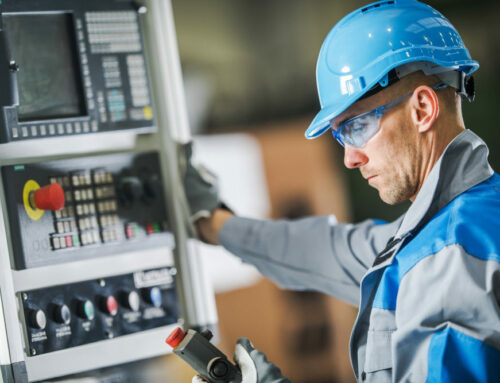Each year over 20,000 road construction workers are injured in work zones. An additional 100 end up being fatalities. These are often a result of rollovers, back overs, collisions, or fires. Of these heavy equipment incidents, 35% result from contact with equipment. Many of these incidents could have been avoided by following simple safety measures. To decrease incidents involving the operation of heavy equipment, workers are turning to these 10 safety tips for operating heavy equipment:
1. Avoid Blind Spots
Heavy equipment operators need to be sure that there is no one and nothing behind them before they back up. Sometimes the operator must physically get out of his machine and ensure nothing is behind the equipment. Mirrors do not always provide a 360-degree look around the machine. The short time it takes to hop off and take a look may save a life.
2. Maintain Constant Communication
Everyone operating heavy equipment should maintain ongoing communication with one another, the ground crew, and their supervisors. Two-way radios have proved to be the best way to do this successfully.
3. Wear Seat Belts
Seat belts save lives, so you should wear your seat belt whenever you are in a vehicle. Heavy equipment is no exception. If a vehicle rolls, wearing a seat belt keeps the operator from being thrown from it. Employers must provide appropriate seat belts in heavy equipment as part of the regulations for worker protective gear. If your employer does not do this, you can refuse to work until they do. When employees fail to use their seat belts, their employers can receive a citation from OSHA.
4. Use the Three-Point Rule for Mounting and Dismounting
You would be surprised to know that several operator fatalities have resulted from careless mounting or dismounting of heavy equipment. When mounting or dismounting equipment, use the three-point contact rule: use two hands and one foot or two feet and one hand to mount or dismount safely. It is not wise to jump off or onto heavy equipment.
5. Load and Unload Safely
Before loading or unloading, make sure your heavy equipment sits on level ground. Being level minimizes the chances of the vehicle rolling or sliding. Another crew member should act as a spotter to ensure that all other people are standing away from your loading and unloading area.
6. Do a Pre-Work Check for Hazards
Before beginning work on a site, conduct a visual overhead and underground check for hazards like cables, gas lines, and hydro wires. Flag anything you find and dig with a shovel when underground obstructions are close. If you create a hole, set up barriers to prevent workers or visitors from falling into them.
7. Avoid Unexpected Start-Up
When performing maintenance on heavy equipment, you can prevent unexpected start-up by making the vehicle inoperative by disconnecting the power source. OSHA’s lockout tagout guidelines provide specific practices and procedures to ensure that equipment is properly shut down. These procedures separate the machine from its energy source, so potential hazardous start-ups during maintenance procedures are avoided. Employers may develop lockout tagout programs that best suit their workplace.
8. Know and Obey Load Limits
It is vital to know the load limits for the size and weight of your equipment. You also want to ensure that your load is secured using the correct attachments. Visually check the rigging for fraying or breakage regularly, and always make sure workers are safely out of the way before moving a load.
9. Conduct a Daily Inspection
A daily inspection before using heavy equipment is important. Using a checklist, walk around the equipment looking for cracked or split hoses, undercarriage irregularities, leaking fluids, and stress points. Check your fluid levels and the tire pressure. When the checklist has been completed, report and correct any maintenance concerns before operating the equipment.
10. Recognize Your Physical and Emotional Limits
We all have different physical, mental, and emotional capabilities, and these vary with age and experience. For your safety and the safety of your co-workers, never put yourself in a situation where you are doing a task that you cannot handle physically, mentally, or emotionally. If you have concerns or are put into a stressful situation, discuss this with your supervisor so they can find another operator better suited for the task. You can ask for clearer instructions or a spotter if you feel you might be able to adjust and do the work. Before starting any work, ensure that you are alert, calm, and optimistic. Workers who are stressed, distracted, depressed, or angry tend to make poor judgment calls that can lead to fatal accidents or injuries. If you need help, ask your supervisor. Being part of a positive, productive work environment is critical to avoiding workplace incidents.
Extreme Safety is Here to Help
It is extremely important to know how to safely operate heavy equipment to avoid accidents and injuries in the workplace. Employers and workers should carefully follow safety procedures and take the necessary precautions to ensure the workplace is safe for everyone. As experts in the safety industry, our team at Extreme Safety is always here and happy to help! You can call us at (310) 856-0166 or contact us on our website.


















